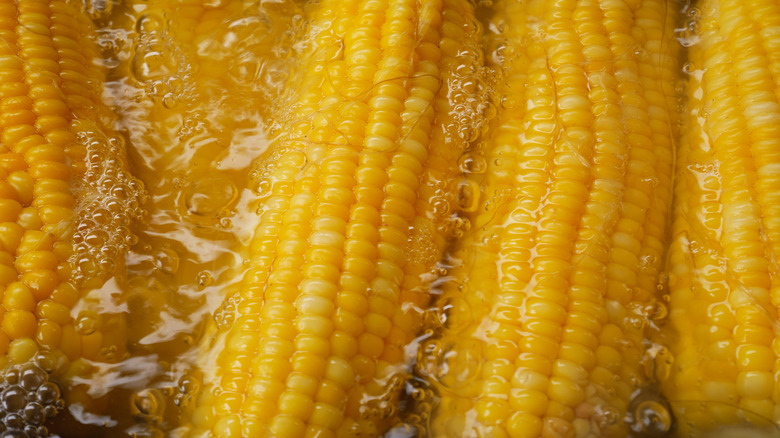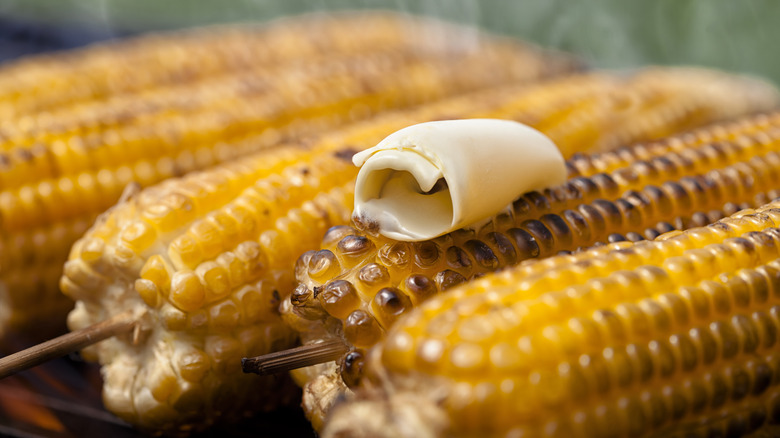The Cooler Corn Trend Food Safety Experts Didn't Find So A-Maize-Ing
A few years ago, a summertime cooking trend went viral on social media: cooking corn on the cob inside a cooler. One of the most prominent posts detailing this trend on Facebook showed how it's done: You just throw your corn (shucked but still on the cob) in a cooler, pour boiling water over the corn, and close the cooler. The post claimed that, after about half an hour, the corn was fully cooked.
If you're only cooking corn on the cob for a few people, you might not see this "hack's" appeal. However, those cooking for a crowd recognized how this would allow them to cook potentially dozens of pieces of corn on the cob in one container without the need to throw another pot on the stove. Additionally, this hack seemed like it would come in handy when cooking corn somewhere you don't have access to a stove, such as while camping.
However, is cooking corn in a cooler safe? Food safety experts, such as Samantha Kennedy from the University of Florida, say no, pointing out that coolers often harbor bacteria and pathogens, which can lead to food poisoning. Additionally, while you might be adding boiling water — which will kill bacteria — to the cooler, the water can degrade the cooler's plastic, which is a separate problem. Plus, when the water cools, it allows bacteria to grow anew.
Better ways to cook corn for a crowd or while camping
Multiple food safety experts agree that the cooler corn trend poses a health and safety threat. However, beyond the risk of bacteria lurking in the cooler and growing again after the boiling water cools, the University of Florida's expert also pointed out that, if people at a party are helping themselves to your cooler corn, they could be adding even more germs to the mix. Fortunately, there are other ways to cook corn for a crowd — or while camping — safely.
One expert who criticized the cooler corn method told Today that the better route is, instead, cooking the corn on the stovetop in batches and keeping it warm on your grill's top rack. This works especially well if you're already making corn on the grill – but it can also work to keep boiled corn warm. Likewise, if you're camping and don't have access to a stove, you can easily cook your corn on the cob directly on the fire after wrapping it in foil. Or, you can cook corn (on a grill or over an open flame) inside the husk. You can also do either of these methods at home, in the oven, if cooking for a crowd.

